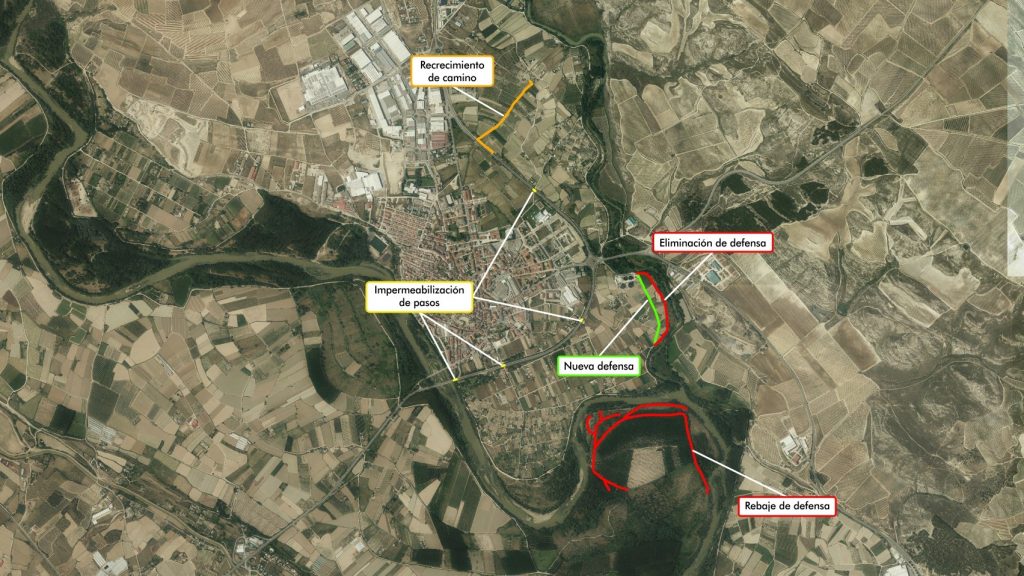The Detailed study of Section 3A, which includes the course of the Ebro and Ega rivers in San Adrián (Navarra), is now available on the web site
The Ebro Resilience Strategy aims to reduce flood damage in the middle stretch of the Ebro River (between Logroño, in La Rioja, and La Zaida, in Zaragoza) and the lower stretches of its tributaries. In this context, over the last two years, detailed studies and simulations of different alternatives for flood risk mitigation have been carried out in the municipalities most affected by flooding.
In this regard, the Ebro Resilience Strategy, in order to keep the population informed of the latest developments in the development of this Strategy, has enabled on this website the tab “Advances of the Strategy”, where the document related to the Detailed Study corresponding to the Ebro and Ega in San Adrián (Navarra) is already available.
In this document, the proposed solutions for the reduction of flood risk in the urban area of San Adrián have been presented, where it is confirmed that, when floods coincide simultaneously in the Ebro and Ega rivers, the latter cannot flow together and accumulates in its own channel.reaching higher levels than expected. The channelization of the river by means of defenses is overwhelmed and collapses in some stretches. In addition, it has a strong narrowing that aggravates this situation.
The dikes prevent the overflowed waters from returning to the riverbed and these are directed against the San Adrián bypass (NA-6531 road). The variant is overflowed at its northern end, reaching the urban area, where it accumulates. At this point they have no exit, since the passages under the bypass are covered with earth before the arrival of the avenue.
This process already took place during the extraordinary flood of December 2021, when part of the town was flooded.
For the flows contemplated in the study, the urban center would be affected by floods with a return period of 25 years, which for this section are 2,000 m3/s of flow in the Ebro river and 350 m3/s in the Ega river.
After evaluating the current situation, different intervention alternatives were analyzed, both individually and in combination, and the study concluded that the most efficient option for achieving the proposed objectives is a combination of actions.
Among the alternatives selected to reduce the risk of flooding is the lowering of a section of the defenses on the right bank of the Ebro, which would improve the confluence of the Ebro with the Ega river.

It is also proposed to set back the current defense in the narrowing of the Ega channel, which would allow increasing its drainage section, reducing overflows.
Finally, the implementation of a security perimeter in the urban area is proposed, a recreating a path to intercept the overflow into the urban zone and installing mechanisms to facilitate the closing and opening of the existing passages. under the variant, depending on the needs of the urban area, and to allow the evacuation of water entering the area, should the case arise.
These alternatives would prevent flooding of the urban center of San Adrián for floods with a return period of 25 years, achieving the objectives set out in the study.
In addition, damages would be reduced on 160 hectares of agricultural land for 10-year return period floods.
Deliberative workshops

At the end of last year, the Ebro Resilience Strategy organized a deliberative workshop at the Casa de la Cultura in San Adrián to present the proposals for action to reduce the risk of flooding in this section 3. The event was attended by 70 people, some of whom presented proposals and considerations that are currently being analyzed.
Finally, it should be noted that in the next few months work will begin on drafting the construction project that will make the proposals proposed for this specific locality a reality.
More information

